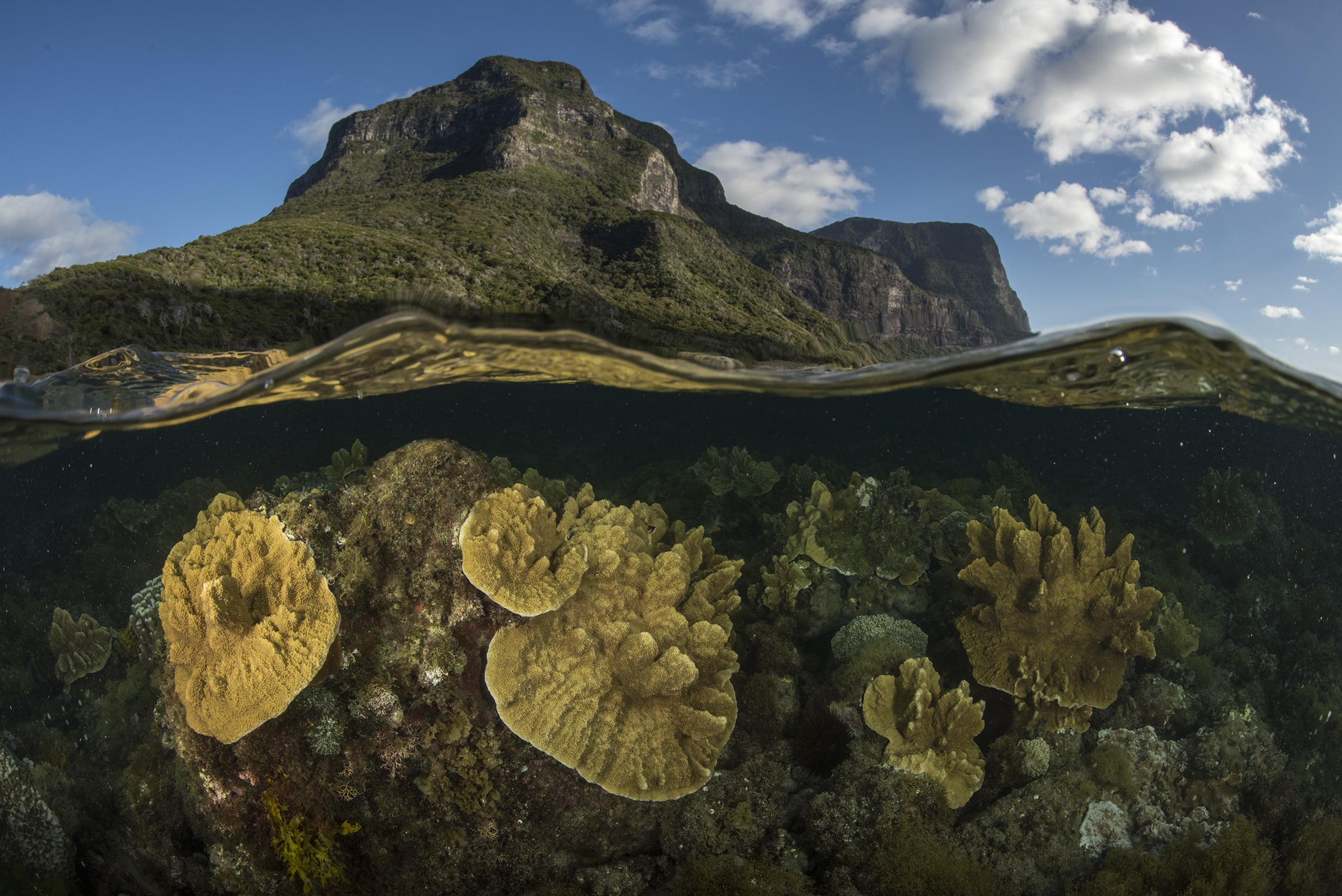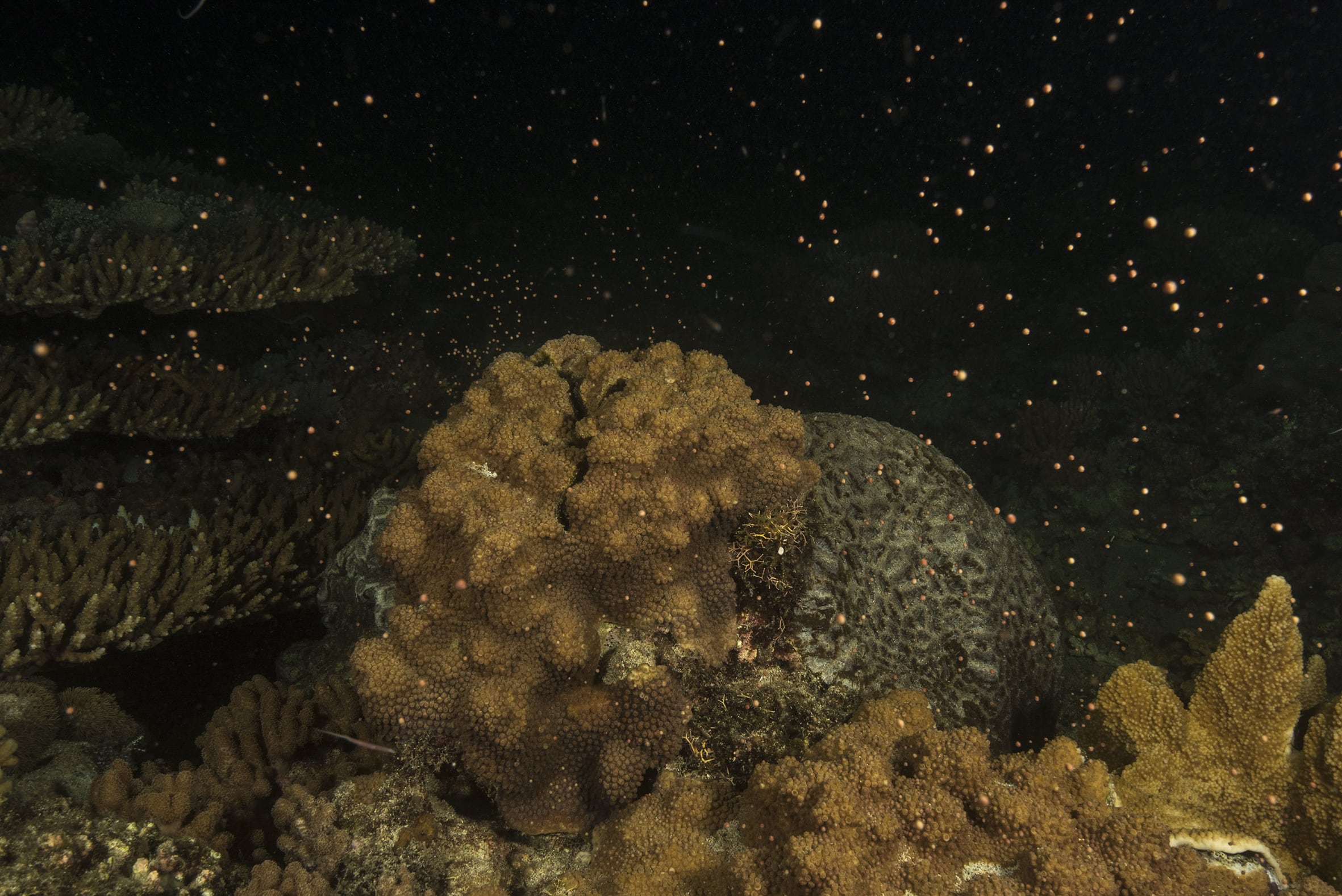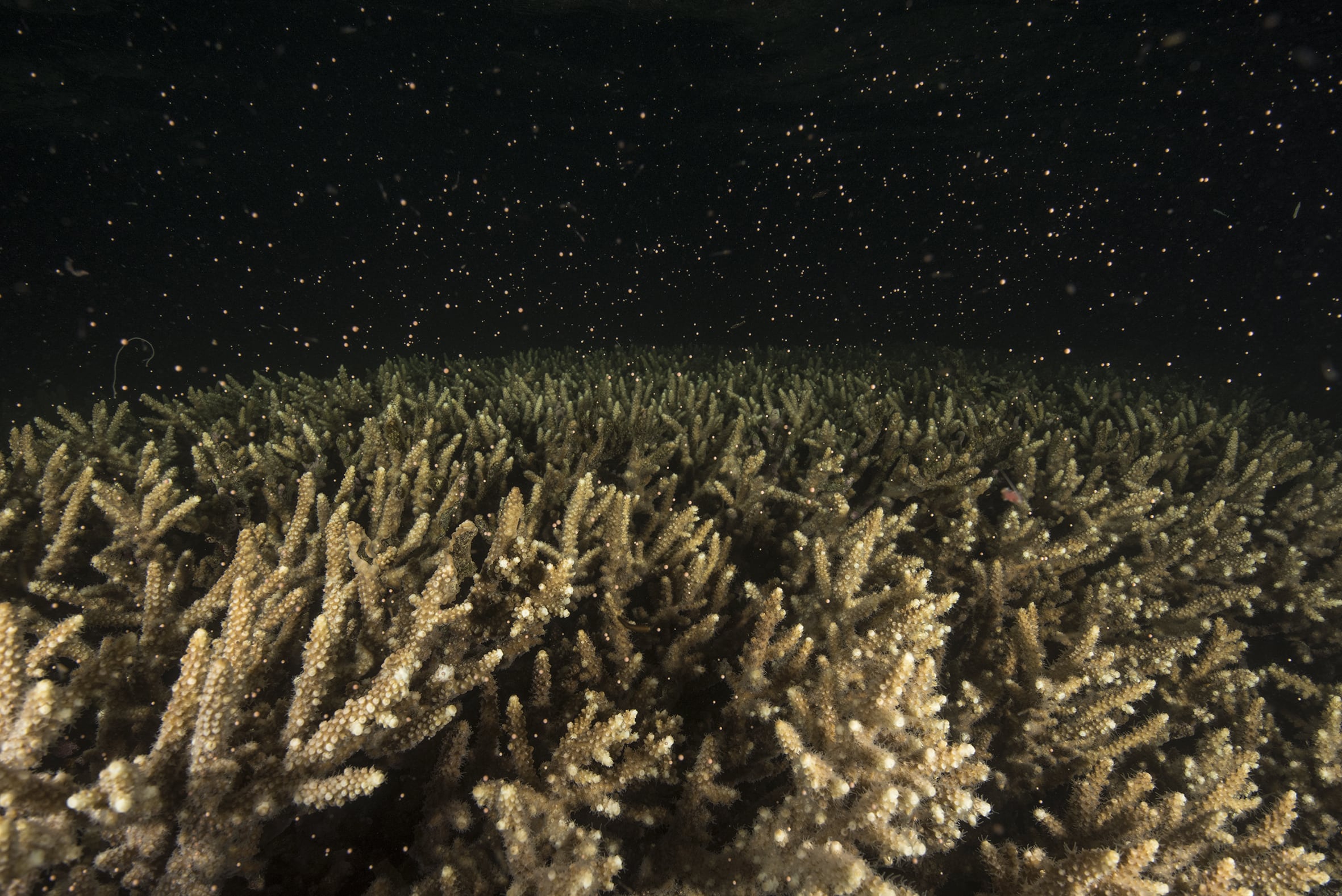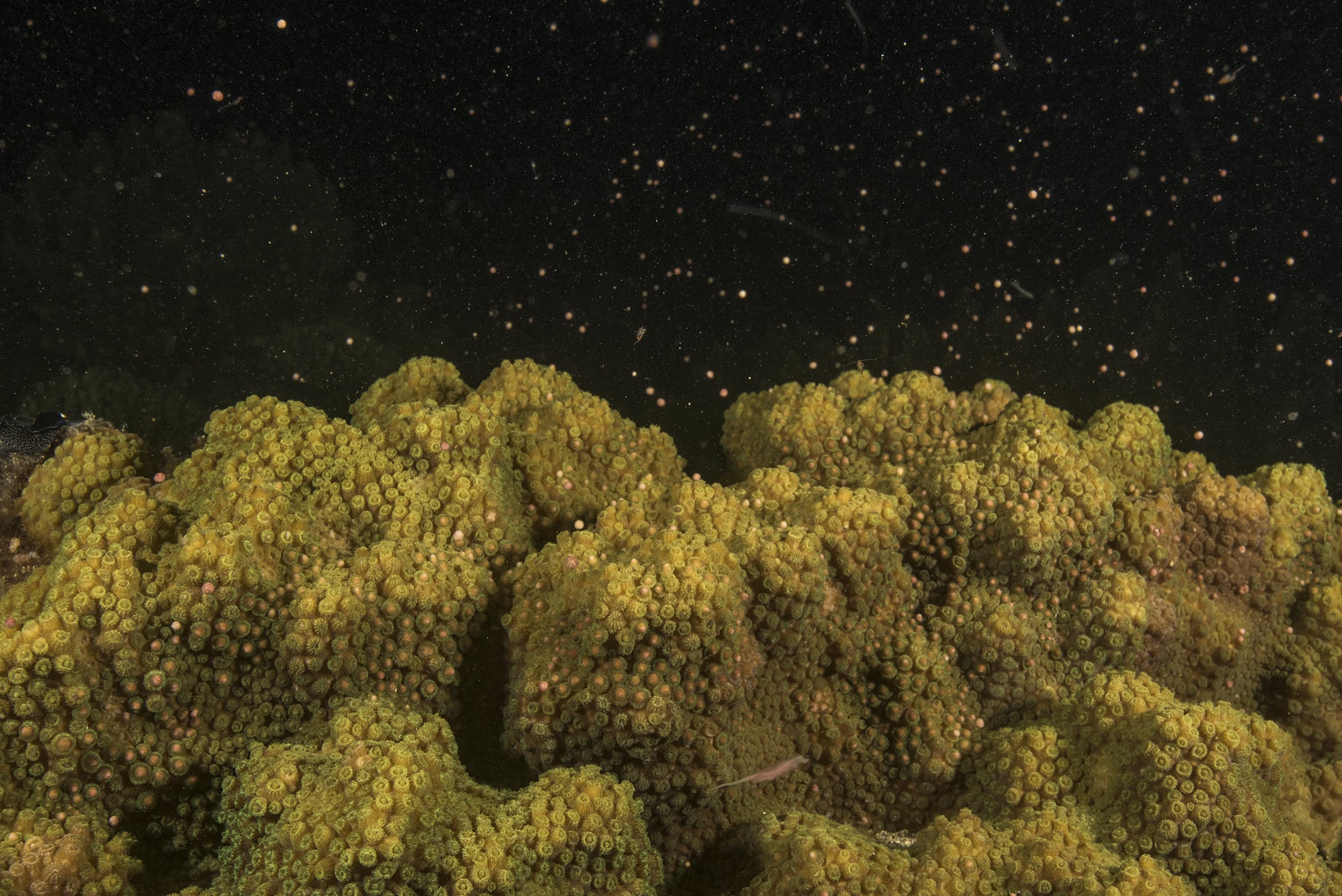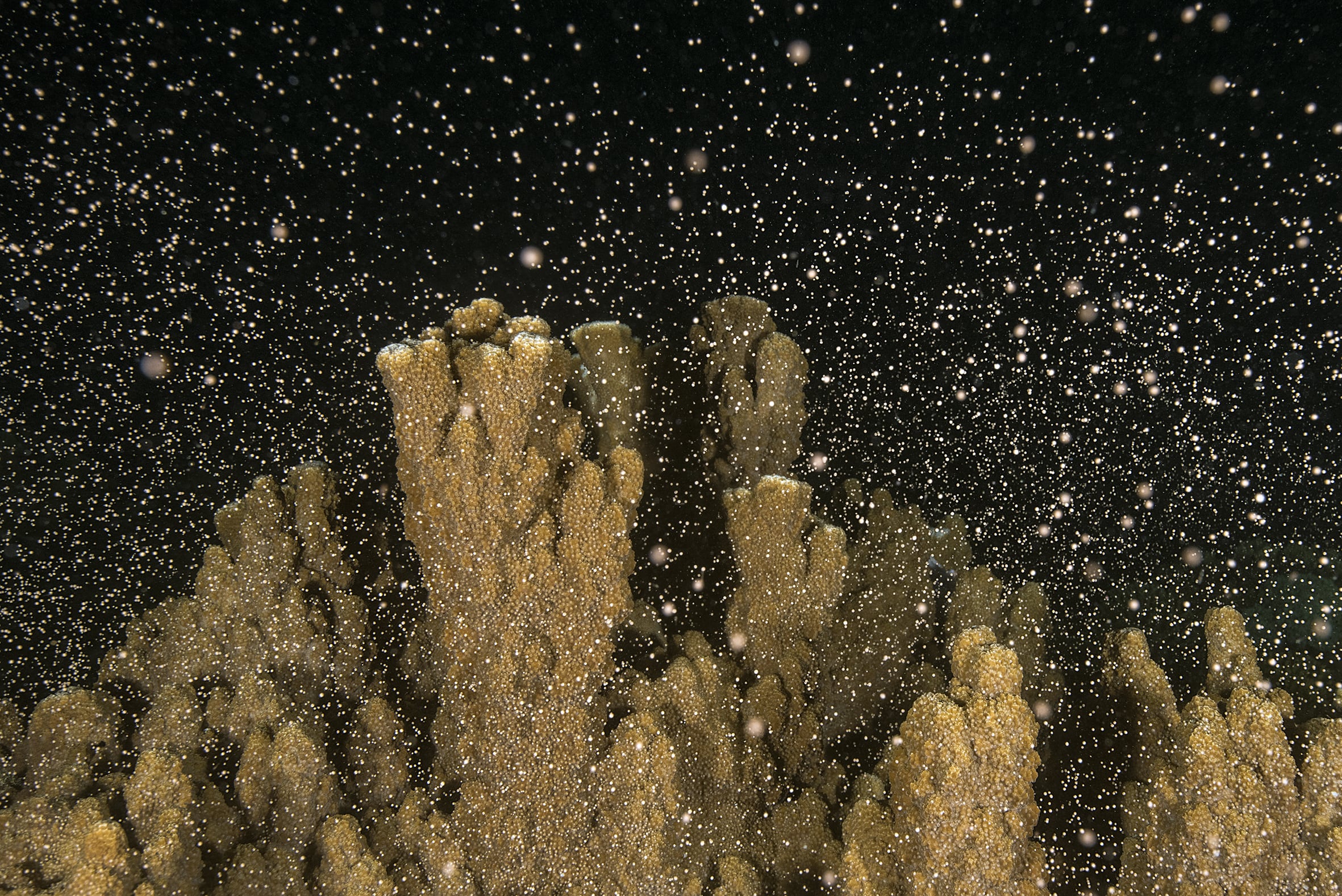In pictures: coral spawning on Lord Howe Island

A World Heritage listed nature-lovers wonderland, Lord Howe Island is renown for it’s mountainous peaks, and bright turquoise waters. It’s aquatic marvels are widely regarded, yet one of the lesser-known natural events occurs at night.
Similar to reefs around the world, many coral species surrounding Lord Howe Island release eggs and sperm on mass – a strategy that increases the opportunity for fertilisation. The resulting larvae are at first mobile and move in the ocean currents but search out and finally settle on hard substrates in suitable locations to begin growing into new coral colonies.
The timing of this event is linked to seawater temperature, lunar phases and light cycles, and is not as predictable as other locations, such as the Great Barrier Reef or Ningaloo. Research from the island suggests that the event is likely to occur sometime between 6-11 days after the full moon in December or January, and is sometimes divided into two events in a single year.
A sign of resilience and fragility, the scene is a celebration of the natural world. To witness it is breathtaking as tiny colourful sperm and egg bundles are released from thriving coral colonies.
More than 86 species of hard coral have been documented in these waters, which is significant given the reefs are small and isolated from other major coral communities. Many of the coral species have yet to be described and are likely to be found nowhere else on earth.
This new decade of coral spawning for Lord Howe Island is a sign of hope for the future of this southernmost true coral reef.
